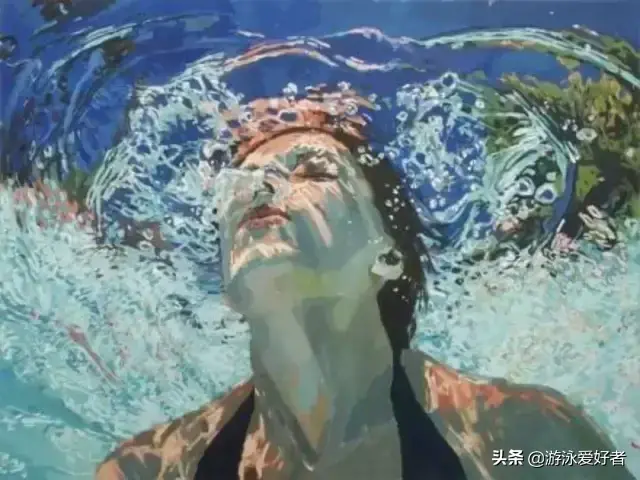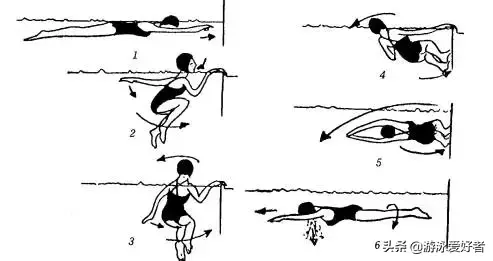
The so-called "geographical location" is also called "water conservancy". Beginners should not swim deep in the water, but should swim in shallow water where people can stand, which can make people float without standing and avoid danger. The so-called "courage" means boldness and wisdom. Dare to fight in the water, have the confidence that "man can overcome water" and learn to swim. Most animals (chickens, pigs, dogs, cows, horses, elephants, etc.) can struggle on their own and learn to swim when they fall into the water. As long as people jump on the water, stretch their hands and feet and paddle hard, how can they not swim? Many young children can learn to swim in the water when they are about six or seven years old. They rely on the courage to struggle and struggle in the water, which embodies the truth of learning to swim in swimming. On the other hand, if you are "timid and afraid of death" and don’t dare to fight in the water, you will never learn to swim if you just rely on buoyancy AIDS and play games. Without the real ability to swim, once something happens to the buoyancy aid and the air leaks, it will be an accident and a danger. If you really want to learn to swim, you have to practice it without a buoyancy aid. Only by relying on self-reliance and self-improvement can we learn to swim and benefit for life.

First, the best order for beginners to learn swimming is:
Breaststroke-freestyle-backstroke-butterfly or freestyle-breaststroke-backstroke-butterfly.
Among them:
Freestyle is the fastest.
Breaststroke is best for exercise. In particular, it can shape beautiful leg and waist curves.
The butterfly stroke is the most beautiful, like a mermaid.
Backstroke is the most energy-saving and suitable for self-help.
Second, learn the tricks of breaststroke:
Hand: stroke sideways and backward. Palm down when paddling. Strive for maximum buoyancy and driving force. When the water comes out, the hand is in the shape of a "knife" (that is, the palm of the hand is opposite to the heart of the hand) to minimize the resistance.
Leg: Kick down and back. When retracted, the thighs and knees are open and the feet jump. (Think of frogs)
Coordination: Push water by hand and pedal water alternately.
Breathing: learn breaststroke, breathing is difficult to master. Have to experience it several times. When the hand pushes the water downward, the body will float upwards. Take the time to let the head surface and take a breath.
Beginners first learn hand posture in shoulder-deep water (the water is too shallow to feel). Lean forward when practicing. Learn to let your hands control the balance of your body. When you find the feeling, pedal your feet gently. You can try to float. At this time, you can try to cooperate with your hands and feet.
III. Frequently Asked Questions and Answers:
1. Why do I always swim sideways in freestyle? It was straight, but after swimming for a while, it turned 90 degrees!
A: The posture is wrong and the force is not balanced. First, keep in mind that the goal is ahead. Second, when the hand enters the water, it should be in front of the chest, rowed to the chest, and then accelerated backwards to the side of the body to get out of the water. Seen from the side as an S-shaped curve. Third, the force should be balanced when the feet alternately pat down the water and push back the water. Fourth, when the head is swinging sideways to breathe, the direction of the hand entering the water should be kept in a straight line with the body. I think your hand may have changed direction when you swung your head, so you turned.
2, which brother gives a breathing skill? I always choke on water! ! !
A: The most difficult thing for beginners to master breaststroke is breathing.
Breathe out in the "O" shape in the water for three seconds. When your legs are holding water and your feet are close together, your hands should "press" the water to your chest. With these two forces, your head can naturally be lifted out of the water. Take a breath with your mouth immediately, for about a second. Remember, breaststroke breathes with your mouth, not your nose, so as not to choke water. ) at first, you may only be able to lift your head once or twice, and you are hardly in a hurry. But the posture is right, practice a few times more, and naturally you can cooperate with your hands and feet and breathe freely.
3. I am learning to swim recently, but why do I always turn around in the same place and find it difficult to move forward?
A: Moving forward mainly depends on the downward and backward pushing force of the feet. I think your legs only have the force to beat the water down, but not to push the water back, so you can only move in place.
4. Do you use your hands and feet when swimming? Why can’t the body float?
A: freestyle: breathing, paddling and kicking the water 1: 2: 2 or 1: 2: 4. Breaststroke: The posture of the body in breaststroke is changing from song to song. When swimming, when your feet are open, your hands are put together in a knife shape and stretched forward. At this time, your feet are hard and your hands are labor-saving. When the feet catch water backwards and recover it, the hands are separated to paddle downwards and backwards. At this time, the main force is the hand. So when you swim, you basically feel that your hands and feet alternate, not at the same time. Many beginners swim with their hands open and their feet open, and then their hands and feet are close together at the same time, which is wrong. It should be done alternately.
5. Is there any trick to holding your breath? It seems very uncomfortable to hold it for a long time.
Answer: When holding your breath, don’t inhale too much oxygen, which is about three-quarters of the maximum inspiratory capacity, and then breathe out when you can’t hold it any longer. When you breathe out, you breathe out a little, then hold it for a while, and then spit again. If you repeat this, you can hold it for a little longer.
Fourth, a small suggestion:
Without a good teacher, it is very difficult to learn to fool around in the water alone. Therefore, it is very important to hire a good coach and master the methods.
An effective way to practice ventilation
If you have been able to swim a few meters without holding your breath, then tell you an effective way to practice breathing:
You can stand in shallow water, first breathe through your mouth and then squat down until your head is not in the water, and then exhale quickly through your nose; When all exhaled, people stand up straight and inhale. This cycle repeats.
Wait until you are proficient in breathing and then cooperate with your hands and feet to solve your trouble of breathing.
Try if you don’t believe me, and wait for your good news. …